The hologram — with its uncanny translucence and hiccuping glitches — has long been a trope in science fiction from Star Wars to Blade Runner 2049. In these dystopian worlds, glittering holograms are often harbingers of change. In real life, the buzz around forthcoming holographic workplace solutions heralds a new era for hybrid work.
“Coworkers can duplicate the serendipity of in-person learning thanks to holoportation, holographic sharing and visualization,” reads a recent media release for Microsoft’s take on the technology. In the not-too-distant future, participating companies will likely have the ability to welcome avatars or augmented reality projections that can move about physical spaces among physical coworkers.
The development of the in-office hologram reflects a reimagining of the modern office space — one in which meaningful hybrid interactions are the priority rather than a glitchy afterthought. Once mandatory hubs, offices are now becoming a mecca for optional in-person meetings or quarterly to-dos.
“We’re deeply engaged in the organic evolution of the office’s purpose,” Andy Goldin, senior HR business partner at RTB House told Built In New York. “These days, our employees typically go to the office or to coworking spaces for a change of scenery, to collaborate and meet with their teams or clients, play pool, order food or generally connect with their colleagues.”
While professionals may yet have to wait for the joys of “holoportation,” many tech companies are already embracing the new reality of designing impactful hybrid spaces. Built In sat down with seven New York tech companies to hear more about their trend-setting takes on the hybrid work model.
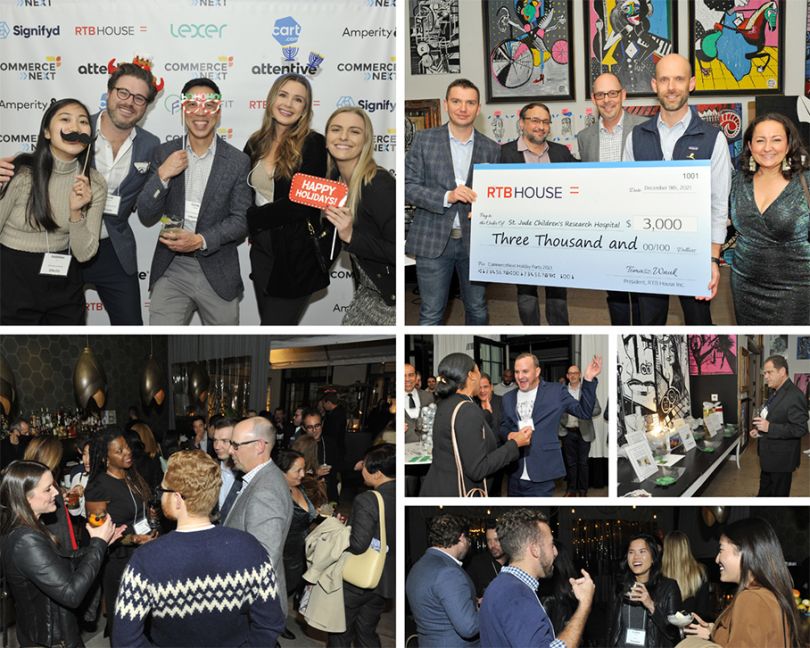
RTB House provides marketing technologies — powered by deep learning algorithms — for global brands. RTB House has adopted a choose-your-own adventure hybrid model, said Andy Goldin, senior HR business partner. “Our employees are able to choose their work location, whether it be home, an office, coworking space, a park or a coffee shop — wherever works,” Goldin told Built In. “These options can even be blended together offering endless combinations, and we encourage our employees to determine the formulas that work best for them.”
Describe your hybrid work arrangement.
Our hybrid work arrangement does not currently require our employees to work from an office or coworking space. That’s not to say that our team members don’t meet in person. Whether at industry events, meetings with clients, or on- and off-site team events, our employees are continually finding ways to optimize opportunities for quality in-person face time with each other.
Why did you choose this arrangement, and how do you think it sets your organization apart as a place to work?
We recognize that each of our employees has different needs and different ways in which they can accomplish their best work. We wanted our policy to embrace this diverse — and inclusive — mindset. Additionally, many of the talented external candidates with whom we speak about potentially joining RTB House Inc. have told us that they are pleasantly surprised and grateful for this model.
As a mostly remote workforce that extends across 16 states, we recognize the importance of focusing a good deal of energy toward figuring out how best to build and perpetuate our remote culture.
Although we couldn’t have known it at the time, our company found success by meeting people where they are.”
What lessons from the pandemic and remote work in general have influenced your hybrid work model?
When I joined RTB House in October of 2020, I was more than a little impressed to hear that not only were they working remotely for now but RTB House wouldn’t be considering a return-to-work date until September 2021. For reference, at the time, many of the other tech companies were already announcing that they were planning to return to the office in early 2021. When September 2021 rolled around, RTB House made a global announcement that the company would be adopting a hybrid work model.
This decision indicated to me that the company was considering how best to set up its workforce for continued success, regardless of whether or not its employees were working out of a specific physical office space.
For me, this illustrates one of the biggest takeaways from the pandemic: that it is possible for work to be accomplished in a remote environment. Although we couldn’t have known it at the time, our company found success by meeting people where they are.
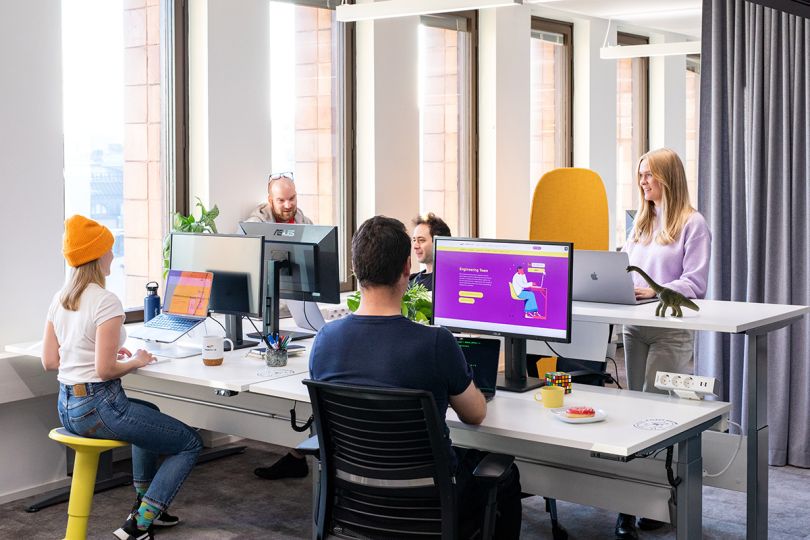
Smartly.io aims to bring brands and people together by automating every step of social advertising. Driven by the goal of liberating marketers from manual work, Smartly.io is building a platform that combines media buying, creative and data. Smartly has adopted a structured version of the flexible work model. “We’ve designated Thursdays as a ‘United Team’ day where all employees are welcomed to come into our offices globally,” said Jenna Schiavone, head of HR, Americas. “Individual teams are then free to choose another day of the week to get together.”
Describe your hybrid work arrangement.
At Smartly, we offer flexible hybrid working arrangements. We are currently encouraging employees to come into the office two days per week.
Why did you choose this arrangement, and how do you think it sets your organization apart as a place to work?
It offers the flexibility that our employees value. We did not want to put out a mandate, so the days in office are not a requirement. We are motivated by feedback from our employees that have said there is a spark that happens when we do get together in person — and that we value the ability to see each other face-to-face.
Our goal has been to provide the best of both worlds: having opportunities to collaborate together while still giving employees ownership over their time to work from home. We still have many fully remote employees, so we are always aiming to make sure our ways of working are inclusive of all of our employees’ arrangements.
We are motivated by feedback from our employees that have said there is a spark that happens when we do get together in person.”
What lessons from the pandemic and remote work in general have influenced your hybrid work model?
After more than two years apart, our team learned that we really were missing in-person collaboration and connections. Prior to the pandemic, we traveled often, had global events and regularly met our customers. There is a certain level of energy and bonding that comes from meeting your coworkers, and we noticed the gap.
We also learned that some of us can be very productive when working at home — for some even more so than at the office. We recognized through sharing our experiences that there is not a one-size-fits-all approach to working. What makes one person energized or work efficiently may not work for another, so flexibility is one of the best benefits we can provide.
Lastly, our employees' time is valuable — at home and at work — so this has driven us to be intentional about how we use their time. If we are encouraging people to come together, we want to ensure it’s adding value. We have scheduled activities like lunch-and-learns, customer or partner visits and fun events to promote more community amongst our team.
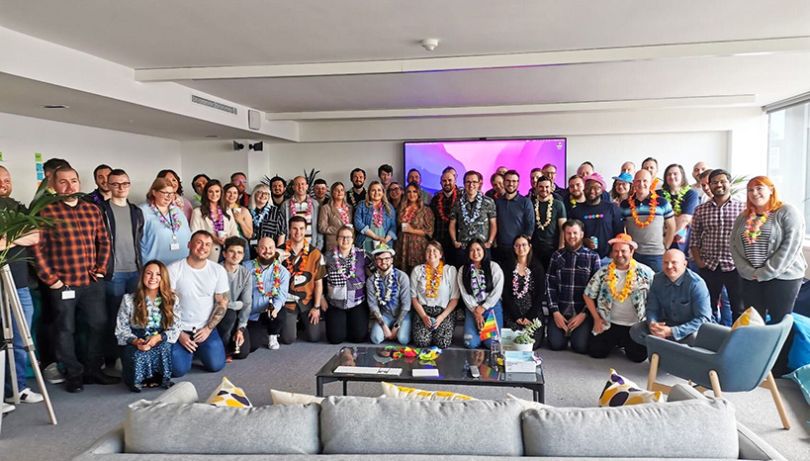
Signifyd provides an end-to-end commerce protection platform that aims to maximize conversion, automate customer experience and eliminate fraud and consumer abuse for retailers. Signifyd serves a number of companies on lists like the Fortune 1000 and Digital Commerce 360 Top 500. HR Lead of Employee Experience Ashleigh Nguyen told Built In about Signifyd’s adoption of the four-day workweek. “With this unique shift, our employees have reported huge improvements in their work-life balance and feel more efficient, focused, creative and refreshed,” Nguyen said.
Describe your hybrid work arrangement.
All Signifyd offices are open and available for employees to work from as desired, but no Signifyer is expected to be in an office on a regular basis.
Why did you choose this arrangement, and how do you think it sets your organization apart as a place to work?
Signifyd was built on a heavily distributed culture from the beginning. Prior to 2017, our entire engineering team was remote, thanks in large part to the forward-thinking mentality of our co-founder, Mike Liberty, who has almost always worked remotely from his home in New Hampshire.
This spread to other functions in the company, and by the end of 2019, nearly half of our global employees were in a location other than our San Jose, CA headquarters. We’ve always believed that remote work doesn’t hinder productivity or value when the right culture and leadership are in place — so it only made sense to entrust our employees with choosing their optimal work arrangements once it was clear the pandemic was not letting up anytime soon.
We’ve always believed that remote work doesn’t hinder productivity or value when the right culture and leadership are in place.”
What lessons from the pandemic and remote work in general have influenced your hybrid work model?
Employee well-being was our priority at the start of the pandemic. At first, the focus was on how to manage the transition to remote work and isolation in the midst of a global pandemic. Then, it turned to how to manage burnout and encourage work-life balance.
At Signifyd, we value outcomes over activities, which means we’re focused on the end results and not how many emails were sent in a day or how many meetings were attended.
As long as our employees are meeting their goals in light of our broader company priorities, we want to empower them to choose the work arrangement that allows them to bring their best selves to the table each day.
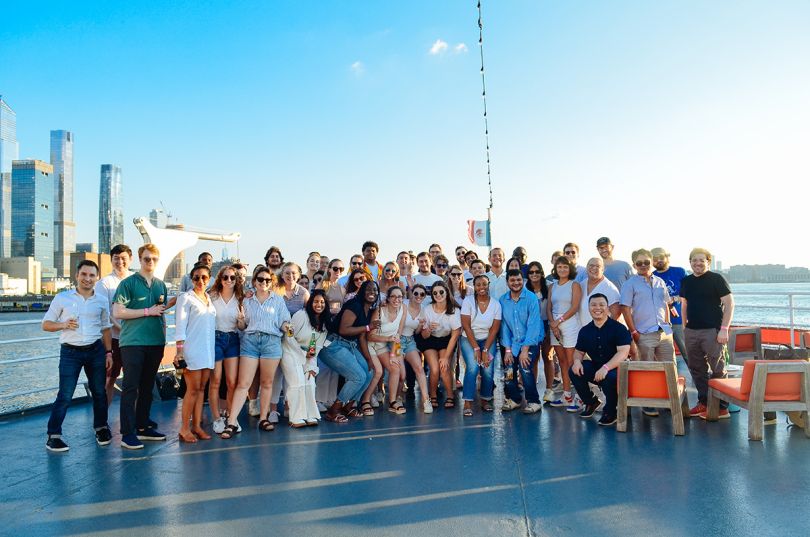
Applecart is a data science startup that has built a platform that uses publicly available data to map over 25 billion social relationships between over 250 million Americans. Applecart aims to help major corporations, trade associations, nonprofit organizations and political campaigns to target their advertising to the professional and personal networks surrounding key decision-makers. On the topic of work models, Applecart sees the value in both in-person and remote work. “We’re pro-remote work and we’re pro-office work,” Justin Cutler, director and people business partner, told Built In. “In the design of our model, we wanted to retain the best of both worlds.”
Describe your hybrid work arrangement.
We feel our hybrid model implements an ideal blend of in-person collaboration and deep work that can be done from anywhere. Each week, our team spends Tuesday through Thursday in the office together and is remote on Monday and Friday.
That said, we allow flexibility for those who want to create a division between their home life and work life by keeping the office open five days per week for anyone who chooses to work in the office on our remote days. We also understand that life happens: We allow flexibility to work remotely on those designated in-office days as circumstances arise.
In our transition to a hybrid model, we wanted to ensure the safety of our employees and their families. Since returning to the office, we’ve required all of our employees and visitors to be fully vaccinated and boosted and test negative on a COVID test every day prior to coming into the office. We make testing easy by providing rapid tests to our employees and guests at no cost.
Why did you choose this arrangement, and how do you think it sets your organization apart as a place to work?
When the pandemic hit, our transition to remote work felt seamless. We’ve held monthly remote team events ranging from cooking classes with chefs from around the world to trivia nights and escape rooms. In many ways, we felt like we didn’t miss a beat. Still, we missed the benefits of in-person collaboration: being able to hop in a room and whiteboard to solve a time-sensitive problem, walk across the office and talk to a colleague, see each other’s body language and spend time together over lunch or after work.
We recognize and value the hyper-productive deep work, increased time with our families and the flexibility that comes with remote work. Equally, a shared workspace fosters the opportunity to collaborate live, increases opportunities for spontaneous innovation and enables human connection that many of us have missed.
It’s more important than ever to be candid and transparent with our teams about why our policies are what they are.”
What lessons from the pandemic and remote work in general have influenced your hybrid work model?
All of these changes have only reemphasized that communication is key. It’s more important than ever to be candid and transparent with our teams about why our policies are what they are, and if they do change, why those changes are being made.
We’ve always appreciated opportunities to bring our team together. We’re now able to hold in-person team events. We recently held a boat cruise along the Hudson River and will have an NYC scavenger hunt in a few weeks.
We knew transitioning back to the office would be an adjustment for everyone, and we’ve received positive feedback as we adjust to a new way of working. We’ve had to be flexible and nimble as health and safety recommendations are constantly evolving. Throughout the pandemic, we’ve provided our team with constant updates on our policies and the thresholds that could lead to future adjustments.
Work & Co is a technology and design partner for companies like Google, Epic Games, MTA, IKEA, Apple, Lyft, Mercedes, YouTube, T-Mobile, Acorns, Etsy and Planned Parenthood. Work & Co’s work model is based on trust, said Los Angeles Managing Director Shane Abrahamovich. “As a global company with a single P&L, our teams were already collaborating across offices in North America, South America and Europe before the pandemic,” Abrahamovich said. “They’re skilled at coming together as dedicated teams with one big focus: shipping mobile apps, e-commerce platforms, AI tools and other digital products that transform our clients’ businesses.”
Describe your hybrid work arrangement.
Given the caliber of our team, we realized we didn’t need to mandate a set number of in-person days or create arbitrary office schedules for people to do their work. Employees determine what’s best for their project teams and their personal schedules.
While we didn’t require people to come back to offices, Work & Co didn’t forgo any office spaces either. On the contrary, we invested in them. And it’s working — in a given week, many people optionally use our physical spaces. They collectively decide when it adds value to come together in person. The result is a hybrid working model that allows employees flexibility while emphasizing the value we gain by coming together in person.
We realized we didn’t need to mandate a set number of in-person days or create arbitrary office schedules for people to do their work.”
Why did you choose this arrangement, and how do you think it sets your organization apart as a place to work?
We’ve always been focused on fostering an environment that helps employees do the best work of their careers while also encouraging balance. We value team members’ time outside of work and show that through PTO policies, summer Friday and anniversary trips. Our hybrid work policy is an extension of that belief.
Work & Co will never be a fully remote company. We believe offices can be an effective tool for personal connection and collaborating toward solving the types of problems we focus on: shipping digital products. Common ways team members use offices include mentorship meetings, candidate interviews, key project milestones or simply enjoying lunch with colleagues.
Additionally, many of our clients join us from time to time to work from our offices as well. We think that investing in creating beautiful, functional physical spaces can help facilitate human interaction. In the last few years, we opened an award-winning space in Copenhagen, expanded in São Paulo and invested in new locations in Atlanta and Los Angeles — where I’m based.
What lessons from the pandemic and remote work in general have influenced your hybrid work model?
The biggest lesson has been that not only is flexibility paramount to people but flexibility can look quite different for folks depending on their individual circumstances and the environment they prefer. Some yearn to get space from roommates or family by going into the office, while others are more productive and comfortable working from home. Those differences can result in better work both individually and collectively for the team. Our hybrid work model suggests that if we continue to lead with trust and adapt, we will stay ahead of the curve.
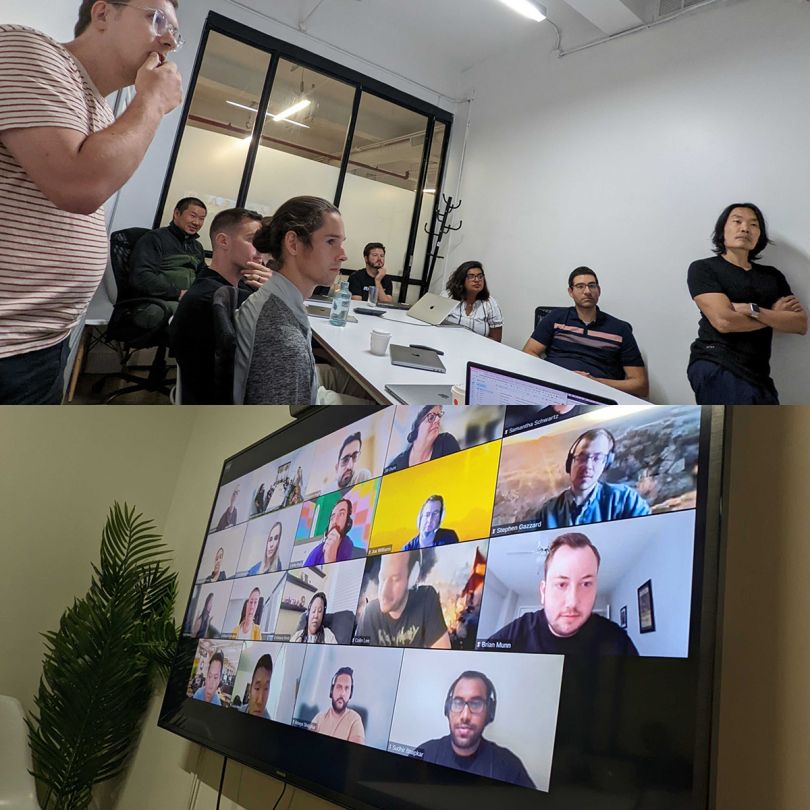
Meetup aims to bring people together to do, explore, teach and learn in thousands of cities. As an organization, Meetup values in-person connection. “Meetup is and has always been about bringing people together for IRL connections,” said Head of People Suvarna Joshi. “Currently, 81 percent of the events on our platform happen in person,” she said. “We have a unique perspective on what makes a difference when you meet in person and what doesn’t.”
Describe your hybrid work arrangement.
We have been working in a hybrid and remote environment for over two years now and have only recently reopened our office. Throughout our back-to-office planning, we’ve been mindful to continue to provide flexibility for employees while encouraging those irreplaceable in-person interactions.
Employees within a commutable distance — we define this as anywhere within a 35-mile radius of our headquarters — are asked to come in one day a week. We encourage teams to come to the office on the same day so that we can make the most of in-person gatherings. Our hybrid arrangement means that we have a smaller space than we had before the pandemic, which gives us an opportunity to make the office a home-like, cozy environment with our iconic red couches.
We’re developing best practices for remote work etiquette so that all employees feel included and equally able to participate in meetings conducted from the office over Zoom. There are no fixed hours for the office since we work with a number of contractors in various time zones. If someone needs to make calls early in the morning from home, they can join us in the office for the second half of the day.
You can be in person without really connecting, and you can connect without being in person.”
Why did you choose this arrangement, and how do you think it sets your organization apart as a place to work?
Focusing on employee connections is very important. You can be in person without really connecting, and you can connect without being in person. We hired a community manager on our people team who focuses on building and nurturing connections at work.
They coordinate local hangouts for our employees, online tutorials where staff showcase and teach a talent or special skill, weekly online games, yoga sessions and more. We have a robust weekly newsletter to promote upcoming events, share photos and encourage participation. We created an employee engagement committee with both New York-based and remote employees so that we could have buy-in from all our staff about our return-to-work policies — and reflect the diverse needs of our people.
What lessons from the pandemic and remote work in general have influenced your hybrid work model?
The onset of the Covid-19 pandemic was a tumultuous period for Meetup. In addition to a drastic switch to fully remote work, we had to adapt our platform model to allow for online events for the first time in our nearly two-decade history. It was a challenging time, but it also was an opportunity to reflect on community-building and maintaining connections — which became more important than ever.
Like other employers, we closed our office space in 2020. Clear, consistent and intentional communication was a priority. We started hosting optional bi-weekly all-staff meetings with presentations from across the company and updates on new policies.
Once it became safer to meet in person in the spring of 2021, we made one all-staff meeting each month a hybrid event, which allowed many of our more recent hires to meet their teams in person for the first time.
Before the pandemic, about 90 percent of Meetup employees were based in NYC. We’ve opened up our hiring practices and now interview talented candidates from around the continent. Currently, our employee base is 60 percent in NYC and 40 percent remote in North America.
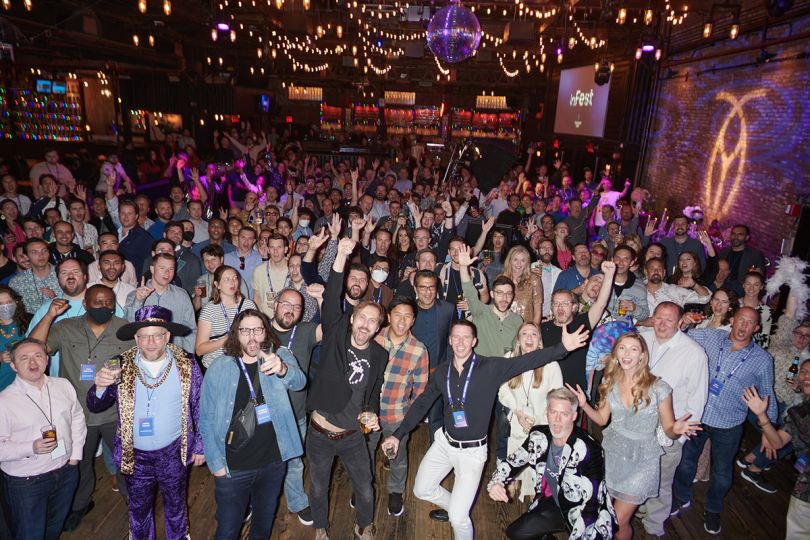
Cockroach Labs is the creator of CockroachDB, a cloud-native, distributed SQL database that aims to help companies scale fast, survive anything and thrive everywhere. David Delaney, director of recruiting, shared Cockroach Lab’s model by explaining its three primary classifications: “Main Labs, Mixing Labs and Network of Distributed Employee Spaces (NODES), which are based on how often Roachers will come into the office, while also taking into account their distance from one of our offices.” Delaney added, “Providing three options to employees allows Cockroach Labs to create a productive setup for all employees.”
Describe your hybrid work arrangement.
Aside from a few exceptions based upon role-specific responsibilities, we have made the decision to offer our employees a great deal of flexibility in their work arrangement, offering three workplace classifications. Each classification has slightly different perks — for example, Main Labs Roachers have their own assigned desk while NODES Roachers get $1000 when they join Cockroach Labs to set up their home office, as well as a recurring yearly stipend of $500.
The Mixed Labs classification is a true hybrid model, covering any employee who is in the office less than 80 percent of the time but also lives within commuting distance to an office. They still have flexibility around the number of days in the office but have fewer remote perks given their ability to leverage the office space when needed.
Why did you choose this arrangement, and how do you think it sets your organization apart as a place to work?
Flexibility and balance have been a part of the Cockroach Labs’ DNA since day one. Even pre-Covid, it was rare for Roachers to be in the office five days a week. Our “Flex Friday” policy encouraged employees to use Fridays to work remotely as a self-managed day. Because we offered flexible options from the start, we were in a position both logistically and culturally to shift to fully remote more easily than some.
The last two-and-a-half years have been a learning experience for everyone, and it led to us lean even more heavily into our core value of “establishing balance.” We found that some employees wanted to continue to be fully remote, some wanted an office to go in a day or two a week, and there were still Roachers who wanted or needed to be in the office full time.
We combined this with another of our values, “respecting each other,” to provide options that could fit any Roacher’s needs — whether they were still local to our NYC HQ or whether they had moved halfway across the country.
What energizes and engages one employee might have the opposite effect on their colleague.”
What lessons from the pandemic and remote work in general have influenced your hybrid work model?
Everyone’s situation is different: What energizes and engages one employee might have the opposite effect on their colleague. The pandemic forced us to further build upon the foundation we had in place around a flexible approach to work.
Some individuals had to move across the country, some had to work staggered hours because of childcare and some had roles that they had to approach in a completely different way given the shift to fully remote — recruiting for example. Despite all the changes that turned our work and life on its head, we found we were incredibly productive and successful during this time.
We tripled in size, expanded outside of the U.S. and closed several of our largest deals in company history. There were also Roachers who were anxiously awaiting the return to the office. Whether it was missing face-to-face interaction or having less-than-ideal home working environments, it became clear that implementing a remote-only approach wasn’t right either.


















